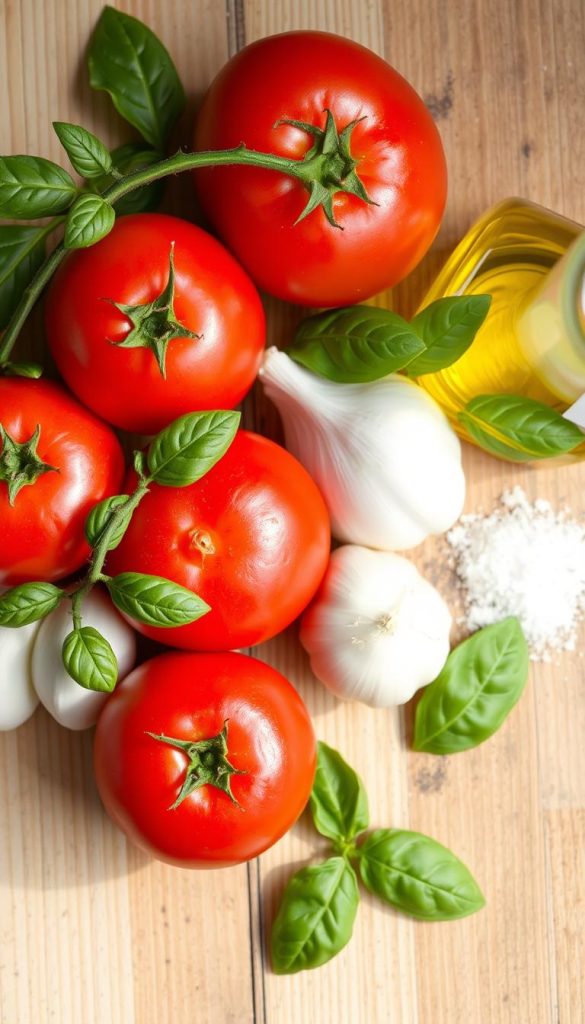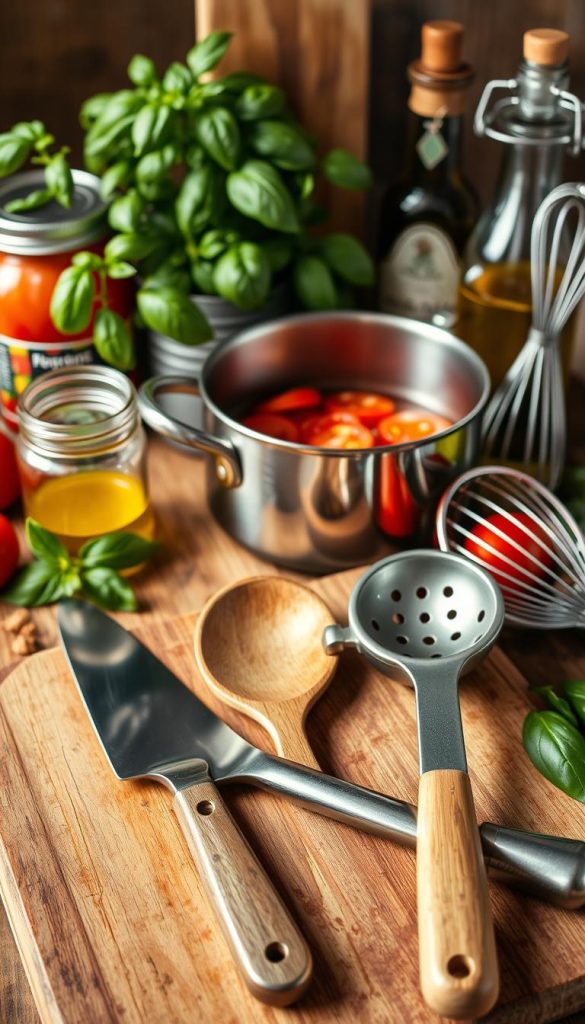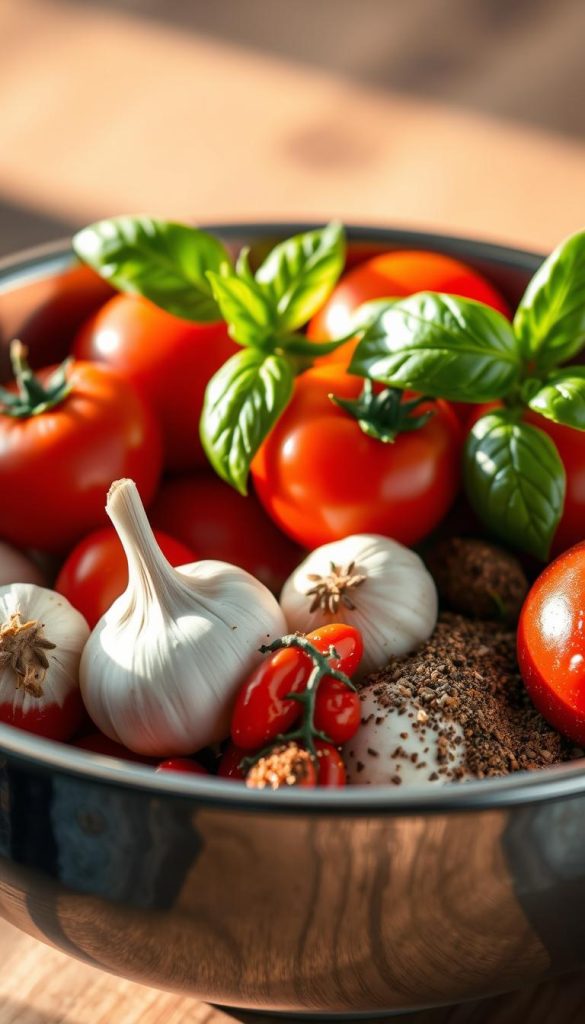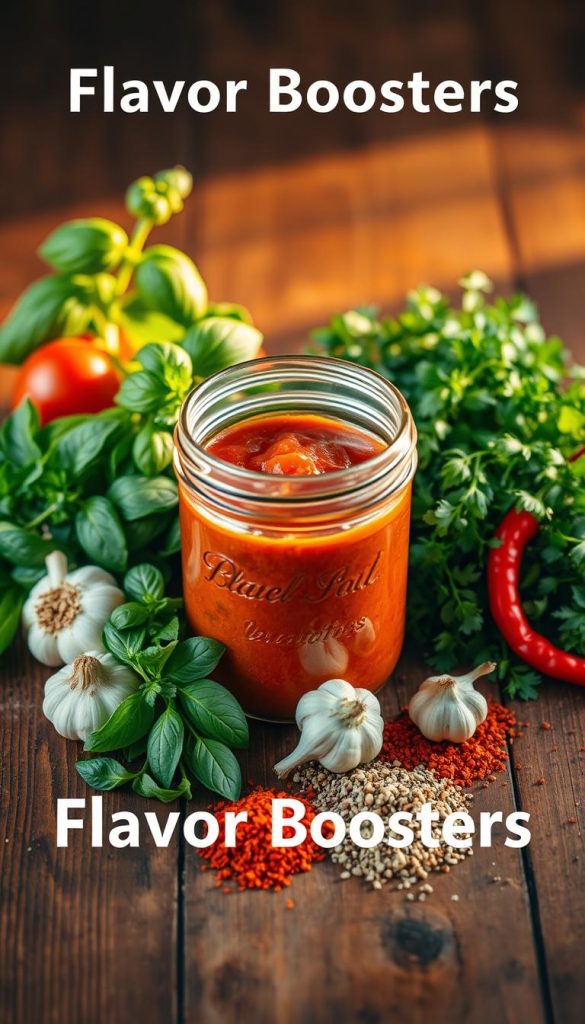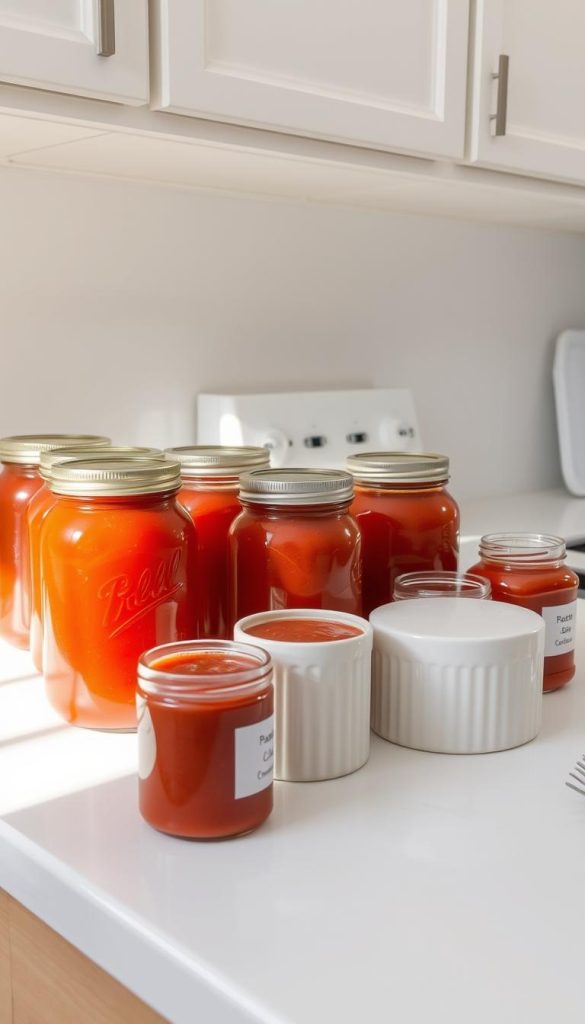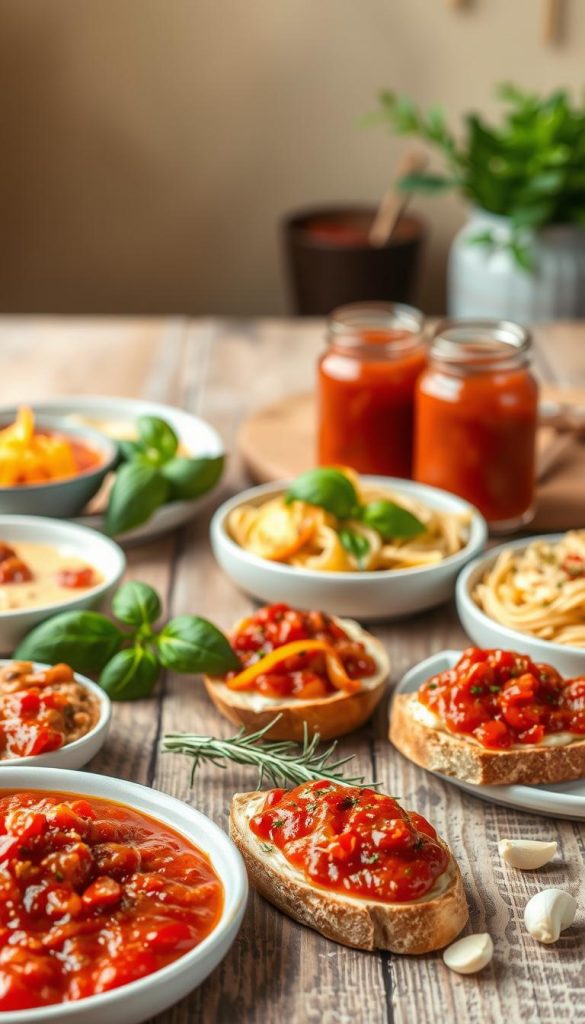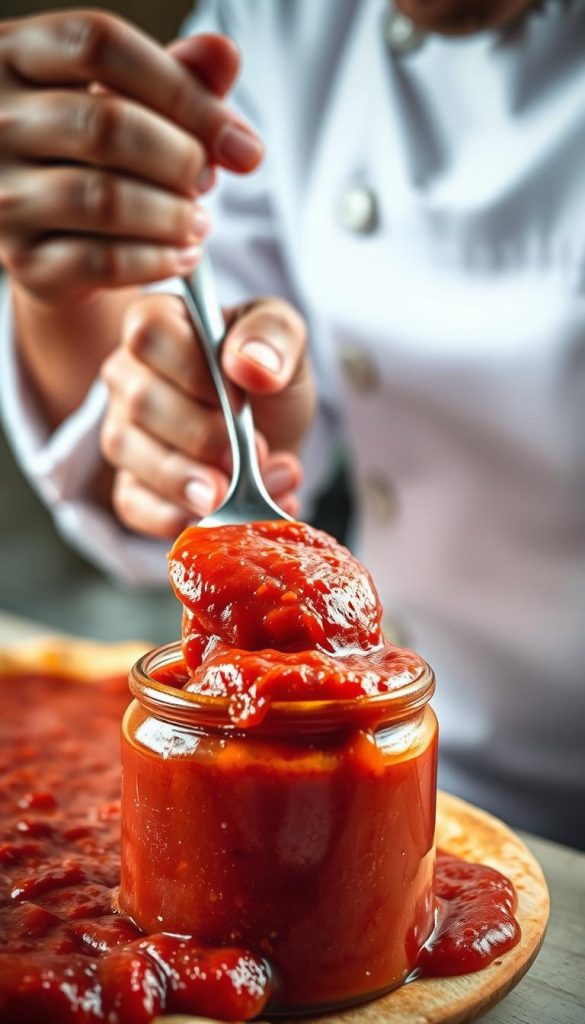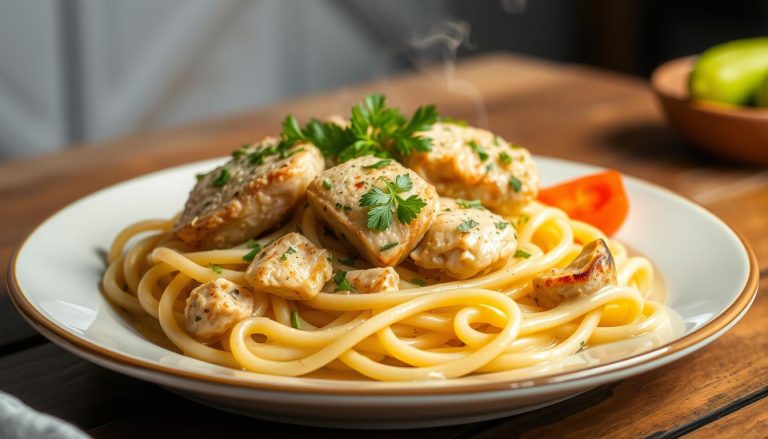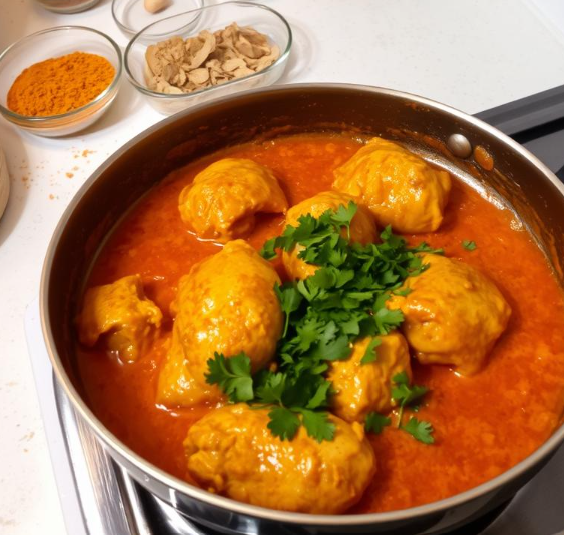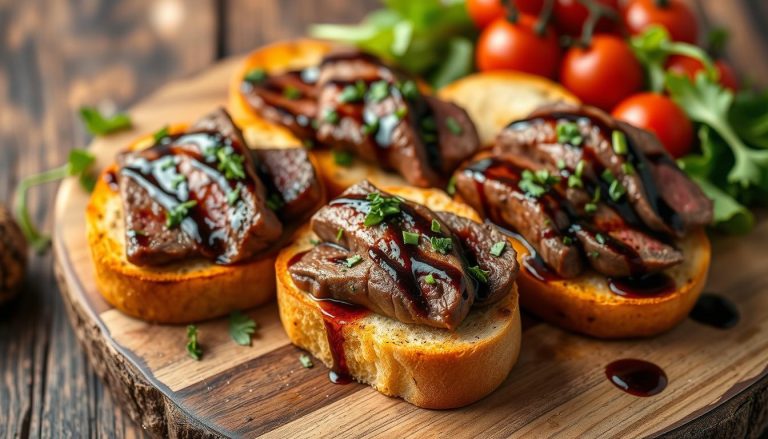Quick & Easy Homemade Pizza Sauce Recipe (5 Minutes)
Discover the secret to a delicious, no-cook pizza sauce that’s ready in just 5 minutes! Inspired by the rich flavors of Chicago pizzerias, this homemade pizza sauce recipe is a game-changer for pizza lovers. Made with just 8 simple ingredients, it’s perfect for those who want a fresh, bold taste without the hassle of cooking.
This easy homemade pizza sauce isn’t just quick—it’s also a hit with the whole family, including kids who love to help make it. It spreads evenly on your pizza dough, creating a thick, flavorful base that enhances every bite. The best part? It’s made with high-quality ingredients like tomato paste, garlic, and herbs, ensuring a taste that’s far superior to store-bought options.
Ready to elevate your pizza nights? Dive into this detailed guide and learn how to make the perfect pizza sauce recipe that’s sure to become a family favorite. Keep reading for ingredient tips, tools, and creative ways to enhance your sauce!
Key Takeaways
- Prepares in just 5 minutes with 8 simple ingredients.
- No cooking required for a fresh, bold flavor.
- Perfect for family fun—kids will love helping out.
- Creates a thick, even layer on pizza dough.
- High-quality ingredients ensure superior taste.
- Customizable with your favorite herbs and spices.
Introduction
Welcome to the world of homemade pizza sauce! Making your own sauce at home is a fun and cost-effective way to elevate your pizza game. The flavor and essence of a pizza lie in the sauce, making it the heart of your dish.
Homemade pizza sauce offers a freshness and flavor that store-bought versions often lack. With just a few simple ingredients, you can create a sauce that’s not only delicious but also tailored to your taste preferences.
A quality sauce is the foundation of a great homemade pizza. Using superior ingredients like whole tomatoes ensures a richer, more authentic flavor. This easy sauce recipe not only cuts down on costs but also adds fun to your kitchen experience.
The flexibility of this recipe allows for custom substitutions, letting you experiment with different herbs and spices. This guide will cover everything from essential tools to creative pairings, helping you make the best pizza sauce every time.
Stay tuned for pro tips, storage methods, and ideas to enhance your sauce. Don’t be afraid to get creative and make this recipe your own!
| Feature | Homemade Sauce | Store-Bought Sauce |
|---|---|---|
| Flavor | Fresh, vibrant, and customizable | Often bland, with preservatives |
| Cost | Cost-effective with bulk ingredients | Can be expensive for premium options |
| Ingredients | Whole tomatoes, fresh herbs | May contain added sugars and preservatives |
| Flexibility | Highly customizable | Limited to the brand’s formula |
Ingredients and Substitutions
Creating the perfect pizza sauce starts with the right ingredients. Below, we’ll explore the essential components and some smart substitutions to help you make the most of what you have on hand.
Essential Ingredients
Here are the key ingredients you’ll need for a flavorful pizza sauce:
- Tomato Paste: This is crucial for thickening the sauce and preventing sogginess on your pizza dough.
- Garlic: Adds a punch of flavor that complements the tomato paste perfectly.
- Dried Oregano: Provides a fragrant, earthy note to the sauce.
- Italian Seasoning: A blend that typically includes herbs like basil, oregano, and thyme, adding depth to the sauce.
- Sugar: Balances the acidity of the tomatoes, creating a well-rounded taste.
Popular Ingredient Swaps
Don’t have an ingredient? No problem! Here are some easy substitutions:
- Replace garlic salt with a mix of garlic powder and a pinch of sea salt.
- Use honey instead of sugar to add a touch of sweetness naturally.
- Opt for fresh basil if dried oregano isn’t available.
By combining these ingredients evenly, you’ll achieve a consistent flavor that elevates your pizza game. Feel free to experiment with the ratios to suit your taste preferences.
| Ingredient | Substitution | Measurement |
|---|---|---|
| Tomato Paste | Blended Canned Tomatoes | 1/4 Cup |
| Sugar | Honey | 1 Teaspoon |
| Dried Oregano | Fresh Basil | 1/2 Teaspoon |
Essential Tools and Preparation Tips
When it comes to making the perfect pizza sauce, having the right tools can make all the difference. These essentials will help you prepare the sauce efficiently and ensure a fun cooking experience.
Must-Have Kitchen Tools
- A food processor or blender for a smooth texture
- Measuring spoons for precise ingredient ratios
- A red spatula to prevent discoloration
- A glass batter bowl for easy mixing
A food processor or blender is crucial for achieving the right consistency. These tools can blend your ingredients in just a few minutes, saving you time and effort. For storage, an airtight container is a must to keep your sauce fresh for up to a week in the fridge or up to three months in the freezer.
To make the process even smoother, consider these tips: use your food processor to chop garlic and herbs quickly, and ensure even distribution of ingredients by stirring in a circular motion. Proper timing is key—this recipe takes just five minutes to prepare, making it ideal for quick meals. With these tools and tips, your sauce-making process becomes stress-free and enjoyable.
Easy Homemade Pizza Sauce Recipe (5 Minutes): A Step-by-Step Guide
Creating a delicious pizza sauce doesn’t have to be complicated. With just a few simple steps, you can craft a flavorful sauce that enhances your pizza experience. This guide walks you through the process, ensuring you achieve perfection every time.
Mixing and Measuring Techniques
Start by combining tomato paste and tomato sauce in a bowl. Use a whisk or blender to mix until smooth. This step is crucial for a consistent texture. Next, add garlic, salt, pepper, onion powder, and seasoning. Stir until all ingredients are evenly distributed for a balanced flavor.
No-Cook Process Explained
This no-cook method preserves the vibrant flavors of fresh ingredients. Simply mix all components and let the flavors meld. The absence of cooking allows each ingredient to shine, resulting in a bright, tangy taste. The process is quick, making it ideal for busy evenings when time is scarce.
- Use a whisk or blender for smooth mixing.
- Measure ingredients accurately with teaspoons and tablespoons.
- Add spices and herbs gradually for even distribution.
- Taste and adjust seasoning as needed.
This recipe’s simplicity makes it perfect for weeknights. By following these steps, you can create a restaurant-quality sauce in just minutes. The result is a fresh, flavorful base that elevates any pizza to the next level.
Flavor Boosters: Herbs & Seasonings
Enhancing your pizza sauce with the right herbs and seasonings can elevate it from basic to brilliant. By carefully selecting and balancing these ingredients, you can create a sauce that’s both memorable and delicious.
Dried Italian Herbs & Oregano Benefits
Dried Italian herbs and oregano are essential for adding depth to your sauce. Italian seasoning, a blend of herbs like basil, thyme, and rosemary, provides a complex flavor profile. Dried oregano, with its earthy notes, enhances the sauce’s authenticity.
A pinch of red pepper flake can add a subtle kick, balancing the savory and sweet notes. This touch of heat elevates the sauce without overwhelming the palate.
Enhancing Garlic and Spice Profiles
Garlic is a cornerstone of great sauce. Using fresh garlic or garlic powder ensures a robust aromatic profile. For a spicy twist, red pepper flakes add a controlled heat that complements the tomato base.
| Herb/Seasoning | Benefit | Usage Tip |
|---|---|---|
| Italian Seasoning | Adds depth and complexity | Use 1-2 teaspoons |
| Dried Oregano | Earthy, authentic flavor | Sprinkle 1 teaspoon |
| Red Pepper Flake | Subtle kick | Add ⅛ teaspoon |
Balancing savory, sweet, and spicy elements is key. Adjust sugar and pepper to harmonize flavors. Extra garlic can boost aroma, while the right herb balance creates a memorable sauce.
Professional chefs emphasize the importance of seasoning techniques, encouraging experimentation to suit personal taste.
Storage and Make Ahead
Proper storage is key to maintaining the fresh flavor and quality of your pizza sauce. By following a few simple steps, you can enjoy your sauce for weeks or even months to come.
Refrigeration and Freezing Tips
For optimal freshness, store your sauce in an airtight container. Glass jars with lids are ideal as they prevent air from affecting the sauce’s flavor and texture. When refrigerated, the sauce will keep for up to 2 weeks. For longer storage, freezing is the best option. Simply pour the sauce into an airtight container or ice cube trays and freeze for up to 3 months.
| Storage Method | Container Type | Duration |
|---|---|---|
| Refrigeration | Glass jar with lid | Up to 2 weeks |
| Freezing | Airtight container or ice cube trays | Up to 3 months |
Before using frozen sauce, allow it to thaw in the refrigerator overnight or thaw it quickly by leaving it at room temperature for a few hours. This ensures the flavors remain vibrant and the texture stays smooth.
Planning ahead? Prepare the sauce in advance and store it properly. This is especially handy for busy weekdays when time is limited. Experiment with different storage methods to always have delicious sauce ready for your next pizza night.
Creative Ways to Enjoy Your Pizza Sauce
Unlock the full potential of your pizza sauce by exploring these creative uses that go beyond traditional pizza. Whether you’re a fan of classic flavors or adventurous combinations, this versatile sauce can elevate your meals in countless ways.
Start by pairing it with various pizza doughs. Try it on traditional white flour, whole wheat, or even gluten-free dough for a delicious twist. The sauce’s zesty flavor complements toppings like cheese, pepperoni, or BBQ chicken, making it a perfect base for specialty pizzas.
But don’t stop there! Use it as a dip for breadsticks or as a spread on sandwiches. You can even incorporate it into pasta dishes or as a marinade for chicken or vegetables. A little extra oregano or red pepper flake can add that gourmet touch, turning your dish into something extraordinary.
| Dough Type | Sauce Usage | Topping Suggestions |
|---|---|---|
| Traditional White Flour | ½ cup for a thin layer | Pepperoni, mushrooms, onions |
| Whole Wheat | ¾ cup for a thicker layer | BBQ chicken, bell peppers, olives |
| Gluten-Free | ½ cup for a light coat | Artichokes, spinach, feta |
Experiment with new ingredients to find your perfect combination. Remember, the key to a great pizza is balancing flavors, so don’t be afraid to adjust seasonings to suit your taste.
“A versatile sauce can lead to endless creativity, making every pizza night an exciting new experience.”
Troubleshooting and Expert Tips
Even with the simplest recipes, things don’t always go as planned. Whether your sauce turns out too thin or the flavors feel off, there are easy fixes to save the day. Let’s dive into common issues and how to solve them like a pro.
Fixing Texture Issues
If your sauce is too watery, it can make your pizza dough soggy. To thicken it, try adding a little more tomato paste. This ingredient is a powerhouse for achieving the perfect consistency. Mix it in gradually, tasting as you go, until you reach your desired thickness.
Balancing Flavors to Perfection
Flavor balance is key to a great sauce. If it tastes too acidic, add a pinch of sugar to mellow it out. On the other hand, if it’s too sweet, a light sprinkle of salt can bring it back into balance. Pepper is another great adjuster—add it sparingly to enhance depth without overwhelming the dish.
- Start with small adjustments—1/4 teaspoon at a time.
- Taste the sauce after each addition to monitor changes.
- Remember, it’s easier to add more seasoning than it is to remove it.
Expert cooks know that even the best recipes need tweaks. Don’t be afraid to experiment and make the sauce your own. Every adjustment is a learning opportunity, helping you refine your skills for next time.
Conclusion
With just a few simple ingredients and five quick minutes, you’ve unlocked the secret to a truly exceptional pizza sauce. This no-cook recipe delivers a fresh, vibrant flavor that transforms any pizza into a memorable meal. By combining high-quality ingredients like tomato paste, garlic, and aromatic herbs, you’ve created a sauce that rivals professional-quality flavors.
Your homemade creation isn’t just delicious—it’s also incredibly versatile. Whether you’re crafting classic pizzas or experimenting with unique recipes, this sauce serves as the perfect base. Don’t forget to explore creative uses, like dipping breadsticks or adding it to pasta. Proper storage in an airtight container or freezer ensures your sauce stays fresh for future meals.
Remember, the key to perfection lies in precise mixing, measuring, and seasoning. Adjust the flavors to your taste, and don’t hesitate to add a pinch of oregano or a dash of red pepper flake for extra depth. This recipe is designed to inspire confidence, allowing anyone to craft a pizza that’s nothing short of extraordinary.
Now it’s your turn to shine! Spread a thick, even layer of your homemade sauce on your pizza dough and enjoy the bold, flavorful difference it makes. Share your creations, experiment with new spices, and savor the joy of a perfectly crafted meal. Your next pizza night just got a whole lot better!



